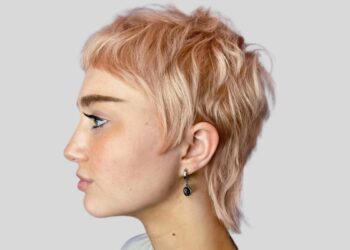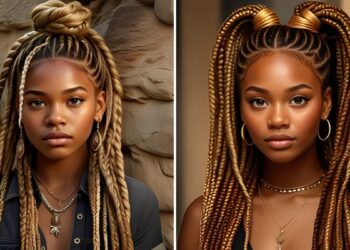Braids (also known as plaits) are a type of hairstyle created by interlacing three or more hair strands. Braiding has been widely opted to wear all around the world.
A plain joining of little hair parted is the simplest type and most common. There can be different and more complex patterns to create a great number of designs from a different number of strands such as (fishtail braid, a five-stranded braid, rope braid, a French braid, and a waterfall braid).
The composition is usually long and narrow, with two layers zigzagging forward through the other overlapping weight.
French braid

This braided hairstyle is known as French plait or Oklahoma braid. Three hairpieces are braided from the top to the neck, including the three-strand gathered braid.
Waterfall Braid

A waterfall braid is a half part French braid in which the hair is braided like a waterfall, and the other half is left to cascade down.
Box Braids

Box braids hair braiding is primarily common among black people. This hairstyle is famously known as “protective style” and “boxy,” considering the division’s hair is square-shaped.
Lemonade Braids

Lemonade braids are famous after Beyoncé’s “Lemonade album,” apart from that cornrow style was pulled off by her. It is a sort of “combo-deal “braid. You get a little cornrow with some Fulani kind, a splash of Goddess braids, and a bunch of laid edges and feed-ins.
Dutch Braids
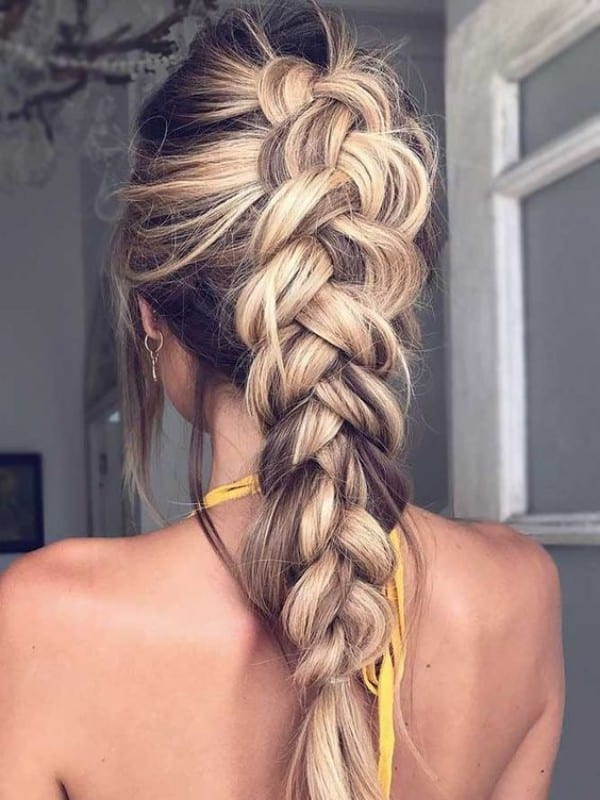
The Dutch braid is called by many names, including the “reverse French braid.” A Dutch braid is done just like a French braid. Instead, you cross the strands under. For an amateur, it cannot be easy, but it’s simple. A simple Dutch braid will work on most hair lengths but recommend a double Dutch braid instead if you have very short hair.
Fishtail Braid

A fishtail braid is a hairstyle that involves interlacing hair strands to create a unique look. Although a ponytail can only be a fishtail braid, one of the most common fishtail braid styles is the French style, which starts from the top of the head.
Feed-in Braids

Feed-in braids use a technique that gives the appearance of real, complete braids beyond your hairline start by “feeding in” synthetic hair with your natural hair. Your stylist will start each braid with a knot using traditional cornrows that combine your hair with synthetic hair.
Goddess Braids

The Goddess braid looks as regal as it sounds. They are giant cornrows, a thicker, bolder, jumbo way of classic braids. Get goddess braids if you want a look that’s going to make a statement. You have to choose your vibe. We can wear this protective style in a variety of ways.
Tribal Braids

Tribal braids have originated from Africa. Several different methods of braid types are created from there. Braided hairstyles have historically been a means of expressing rank, age, relationships, and more. Tribal braids today are all about recognizing heritage when showcasing your character and style.
Fulani Braids

Fulani braids, got famous by the Fulani people of Africa, and are a style that typically includes the following elements:
- A cornrow braided down the middle of the head
- One or a few cornrows intertwined in the opposite direction just near the temples towards your face
- A braid wrapped around the hairline
- Accessories, such as beads, most times
Yarn Braids

Yarn braids are a kind of defensive style that uses yarn rather than hair braiding. It gives many of the same advantages as other protective styles, helping to shield your hair from the elements, enabling your hair to grow longer, and giving you the ability to play with a wide range of styles.
Crown Braids
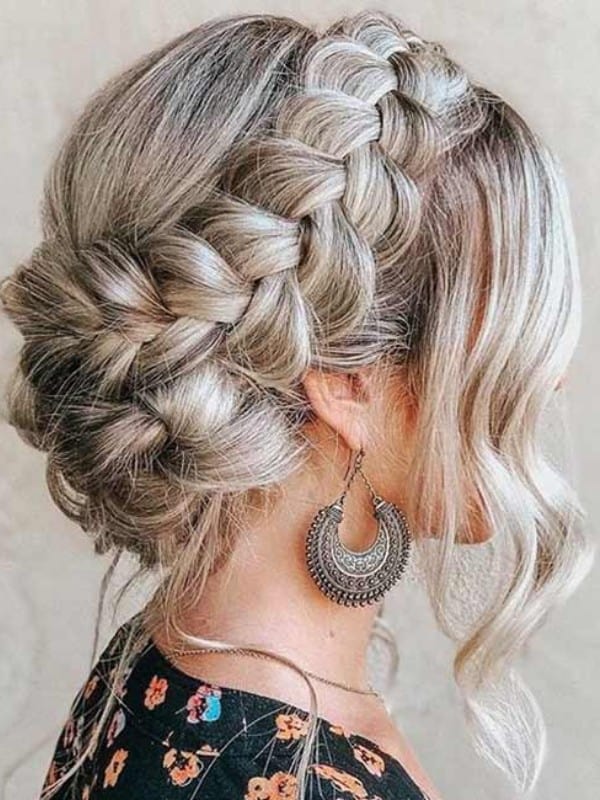
Crown braids are aptly referred to as a kind of French braid that wraps around the head in a half-moon shape just above the forehead (resembling a crown or tiara). And though they look a little complicated, you can certainly master the crown braid if you know how to do a simple French braid straight down your head, too.
African Hair Braiding
Cornrows are one of the African hair braiding styles in which the hair is braided very close to the scalp, creating a continuous, raised row using an underhand upward movement. As the style indicates, Cornrows are often done in flat, straight lines, but we can style in intricate geometric or curvilinear designs.
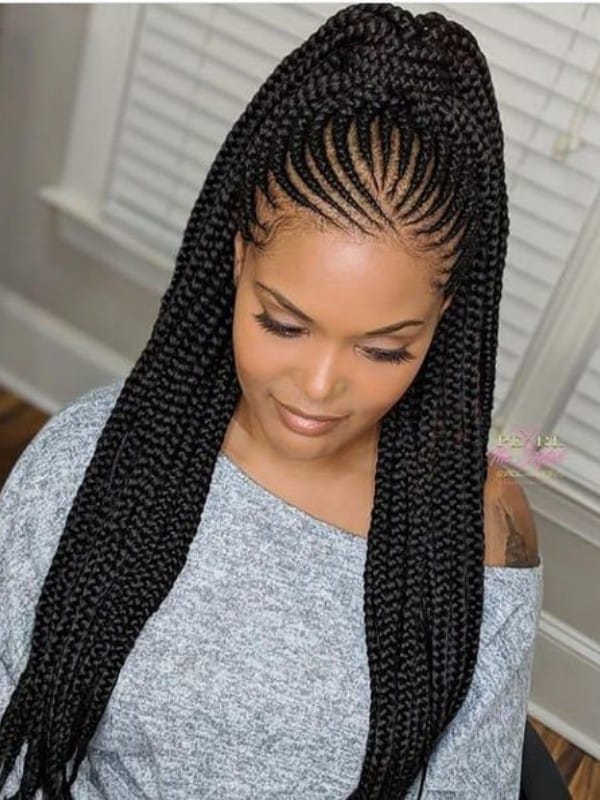
Jump Link
Types of African Braids
- Dynamic Side-Swept Cornrows
- Asymmetrical Goddess Braids
- Long Chunky Black Braids
- Feed-in Braids
- Braided Ponytail
- Cornrows Enclosed by Headband Braid
Butterfly Braids
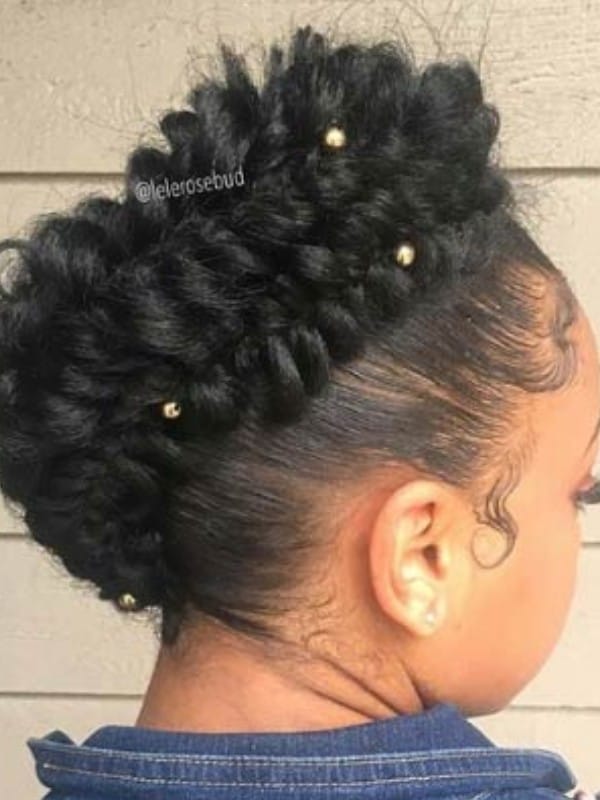
Butterfly braids are a delicate style. These stunning braids have become one of the hottest hairstyles to try because they look great and do not need much maintenance.
Mohawk Braids
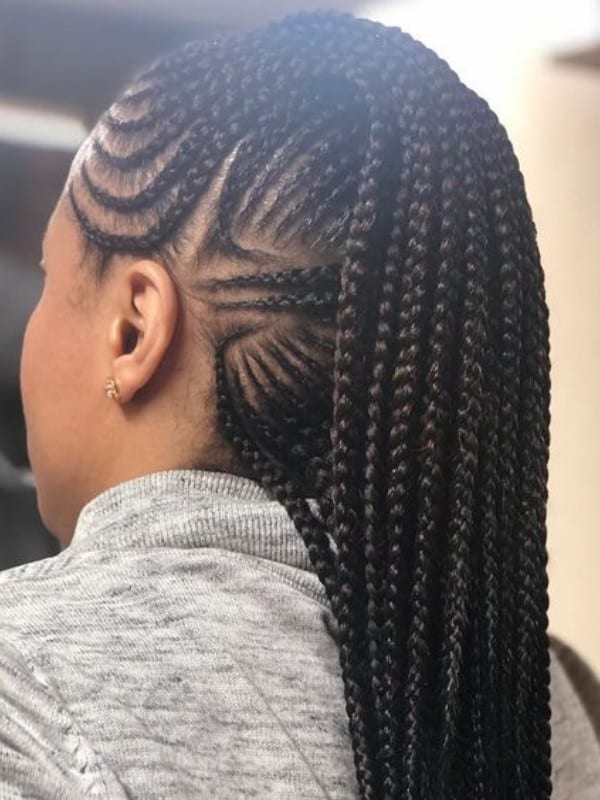
The Mohawk (Mohican) is a hairstyle in which both sides of the head are shaven in the most common variety, leaving a strip of distinctly longer hair in the middle.
Braided High Ponytail with Front Side Braids

This top braided knot with side braids is a terrific look for those looking for an upgrade to feed-in cornrows. We recommend adding beads or adding jewels to the cornrows at the end of your loose braids.
Jumbo box Braids

In this braid type, hair is divided into larger parts, unlike micro braids, enabling the braiding process quickly. Besides, jumbo braids use more hair braiding, making any plait thicker overall.
Triangle box Braids

In this braid type, hair is divided into larger parts, unlike micro braids, enabling the braiding process to move quickly. Besides, jumbo braids use more hair braiding, making any plait thicker overall.
Side Braids

The cutest type of braiding that goes over the shoulder is the side braid. With side-swept bangs or a romantic, rather messy look, it looks perfect. Do a simple side braid or a variation like a French, Dutch, or 4-strand braid to change your look.
Halo Braids

The halo braid is a type of plaited hairstyle designed to produce a pleasant halo effect when you weave two long Dutch braids around your head and then pin them in place.
Senegalese Braids
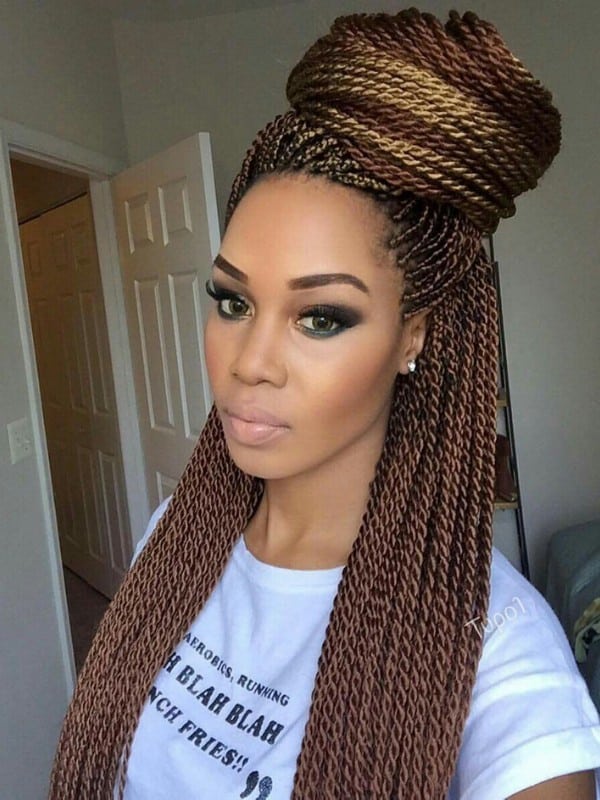
Senegalese twists are made by first wrapping the hair braiding option around the root of your natural hair. The hair is then twisted from the core from the two strands to the hair shaft’s ends.
Ghana Braids
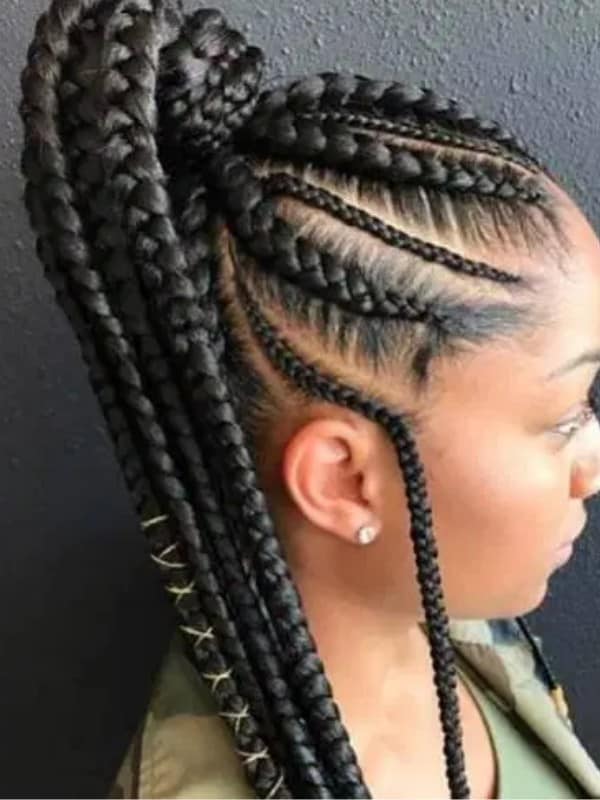
This classic protective style for natural and curly hair is the Ghana braids, also called cornrows, straight-backs, or banana braids. The braids in Ghana can trace their origins back to Africa.
Micro Braids

The kind of braiding style that is more delicate and small is the micro braids. The braids are tightly woven to the scalp, and the best thing about the technique is that they will stay in your hair for months. It’s a typical style among African Americans, but everyone can also use it.
Ombre Braids
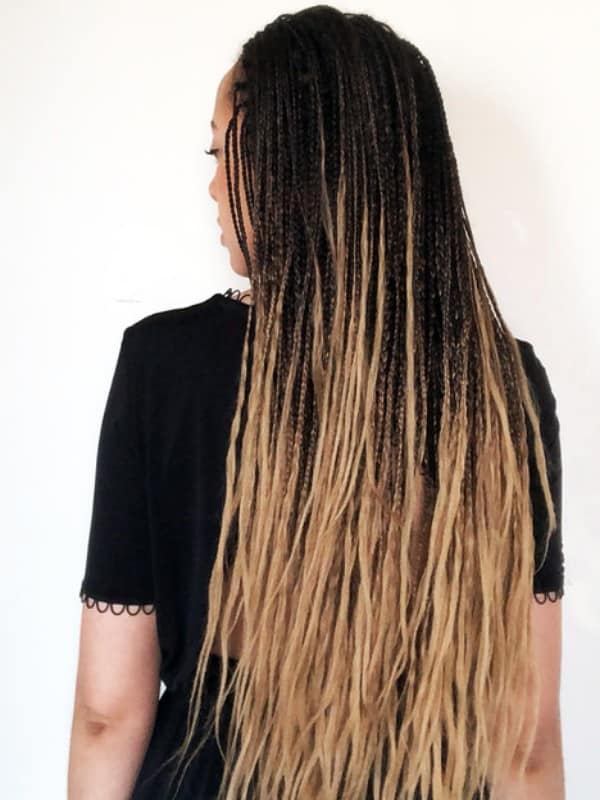
In the year 2012, Ombré was a huge hair trend with weaves. Do you guys know Ombré (Uhm-brei) hair? It refers to the color of hair fading from light to dark. It gradually becomes brighter or darker, towards the ends, instead of the color beginning from the roots. In French, the word ‘Ombré’ means shadow or shade.
Tree Braids
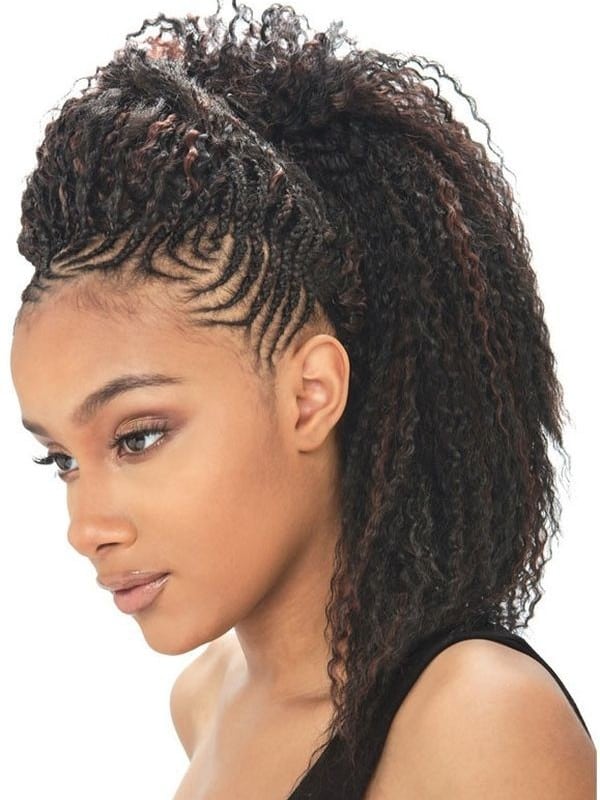
Tree braids are a style of protection also recognized by the term invisible braids. The idea is that the braids in your hair are not visible, and only the ends of the extensions that have been fitted into the braid are visible. Some women choose to get the tree braid effect with regular box braid styles.
Half Up half Down Braids

This half-up, half-down hairstyle is not just one part of hair scooped and pinned in the back. It’s two if you look closely. Section off the hair at your crown to reconstruct, gently back-comb it, then twist and pin in place.
Braided up-do

This look includes braiding the front half of your hair with a low braided halo and then twisting the back half. We suggest using a cream, such as Darcy’s Botanicals Organic Coconut & Aloe Moisture Pudding, with the amount of braiding and twisting for this style, which will leave your hair smooth and moisturized after you take down the style.
What is the purpose of braiding?
When you braid your hair, it helps you to change your facial appearance and stylish by interlacing your hair. It is known that braiding hair not only in trend but contains many benefits including growing your hair.
Is braiding your hair is healthy?
Styling your hair daily can be difficult, braids are a tremendously tricky style to maintain, but they won’t be safe unless you nourish them. It’s compulsory to keep your natural hair moisturized and lubricated once your braids are mounted. Synthetic hair/add-on can dehydrate natural hair most of the time, which is unsuitable for the hair.
Do braiding makes your hair growth faster?
Braiding your hair is a healthy and safe practice that can prevent breakage and strengthen hair structure. It also protects your hair from dust and damage. While braids alone won’t directly speed up hair growth, they can help maintain hair health, which supports natural growth processes.
Is braiding bad for hair?
No, braiding is consider a very healthy process beneficial in many ways. Following are the benefits of braiding hairstyle:
- Hair braiding helps you stop hair breakage.
- Awesome For Frizzy Hair
- Humidity Locks
- It prevents the hair to get tangled
- So easy if you consider it as a style
- Braid them when your hair is wet. When opened, you get perfect beachy waves.
How long does hair braids last?
On average, a braid lasts from two to eight weeks. You should be clean it every two to three weeks, depending on what style and type of braid you are doing. Your hair needs care, especially if you’ve been swimming (or happen to sweat a lot) your scalp needs TLC (Tender loving care).
What are artificial hair braids made of?
Synthetic fibers consist of many different materials and do not include human hair. For braids, synthetic fibers are inserted vertically and horizontally into the hair. Because they are artificial so they can get affected by friction and heat, that’s why it does not last as long as human hair. The output that comes from fibers differentiates widely.
Final Words
Braids have been a tradition and part of many people’s life. Braiding hair has been divided into many styles to continue and maintain it properly. The techniques mentioned above are widely used all around the world.


